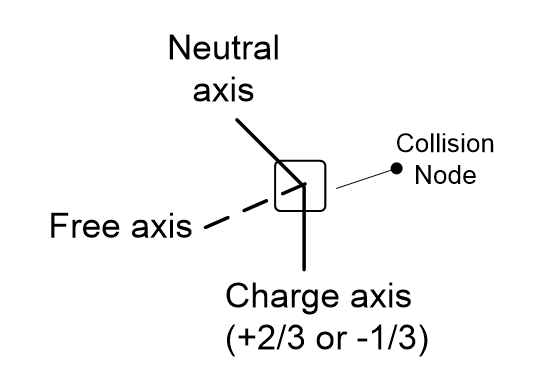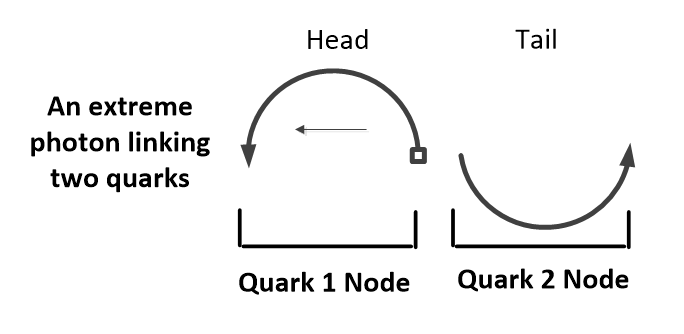The forces that bind protons and neutrons in an atomic nucleus are so strong that they break in a nuclear explosion. A bond that strong is necessary in order to overcome the huge electric repulsion between same charge protons. The standard model logic was that a strong force had to hold quark particles together in a nucleus. This force has the odd property that it is zero at short range but increases as quarks separate, an effect analogous to stretching a rubber band that was called asymptotic freedom. It exchanges no energy so it isn’t electromagnetic and increases with distance so it isn’t gravity. The standard model needed a new force to explain how the atomic nucleus was held together.
Its answer was quantum chromodynamics, a field theory derived by analogy from quantum electrodynamics (QED), the theory that explains light. QED explains electromagnetism as perturbations caused when an electromagnetic field absorbs or emits photons as shown in Feynman diagrams. These perturbations gave infinities that were removed by renormalization, a mathematical trick that arbitrarily subtracts infinities from the equations to get the finite answers desired.
Aiming to repeat the success of QED, quantum chromodynamics (QCD) proposed that a new strong field emitted new particles called gluons with a new color charge. In essence, the strong field’s gluons acted to cause effects just as the electromagnetic field’s photons did. The gluons then used red, blue and green charges to bind quarks in a proton just as photons bind electrons in atoms, but with three values not two, where the red, blue and green charges cancel to “white” just as positive and negative charges cancel to neutral. Three colors needed anti-colors to work, so to turn a red quark blue needs an anti-red gluon as well as a blue gluon. It was tricky but the calculations worked, so when in 1978 the PLUTO project managed to interpret a three-jet Upsilon event in gluon terms, gluons joined the standard model pantheon. Meaning didn’t matter, so no-one asked why a universal field through all space existed for an effect that applied only to quarks.

A quantum processing model approaches the same facts differently, based on reverse engineering rather than devising a field to fit the facts. The quark structure in Figure 4.11 shows it has free photons in one axis, so could they link quarks that are close together, in a quark plasma? The free photons of one quark could insert themselves into another as shown in Figure 4.12, where an extreme photon has its head in one node and tail in another. It is now proposed that when quarks are side-by-side, the extra photons in a quark’s free axis insert themselves into another nearby quark like “hooks”.

Photon sharing results in a bond that is initially zero but increases with distance because as linked quarks separate the shared photon wavelength increases to release the energy needed to pull them back together. In the next chapter, matter moves by a probabilistic reboot so stretching a photon increases the processing in the gap making the quarks more likely to restart there. The more the quarks separate, the stronger the effect, so quarks side-by-side experience no force but are pulled together as they separate. In effect, shared photons are the “elastic bands” that hold quarks together. Quantum realism attributes the strong force to quarks sharing photons. Could this let quarks fill all the channels of a node plane to achieve stability?